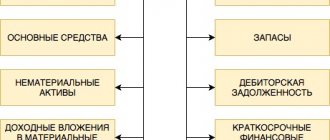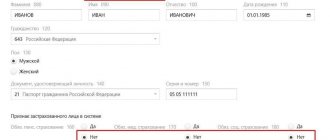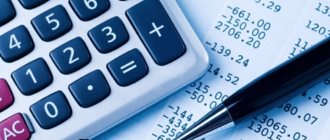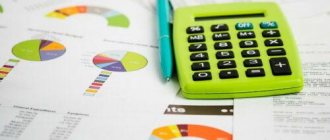What are other current assets?
Other current assets (OCA) are minor items on a company's balance sheet that are combined into one account because they are not important enough to warrant a separate list . These assets are not cash or cash equivalents and represent a limited source of liquidity for the company.
Take our proprietary course on choosing stocks on the stock market → training course
Reports may contain references that indicate what is included in other categories of current assets for the benefit of investors who want to gain more information about the firm. Typically, the amount of such assets is small and may not have a significant impact on the overall financial position of the company.
POA is a category of assets that a firm owns, benefits from, or uses to generate income. It can always be converted into cash within one business cycle. They are referred to as "other" because they are unusual or insignificant, unlike typical current asset items.
POA are indicated in line 1260 of the balance sheet and are part of current assets.
Important! For the term 1260, the amounts of PAP are reflected that meet the conditions:
- circulation period up to one year or cycle;
- data and information about these funds is not significant when analyzing the financial condition of the company;
- the data cannot be reflected on other lines of current assets;
- the amounts are very small;
- amounts are reflected at the end of the year in the balance sheet.
Important! When assessing the financial condition, an analysis of the turnover of working capital is carried out for each line, including in relation to POA. The growth of the turnover rate has a positive trend and indicates an increase in the efficiency of their use in the company. With a decrease in the turnover rate, we can talk about a decrease in the efficiency of using POA,
Question answer
Ekaterina Luchnikova, lawyer: Other current assets often raise questions from accountants in terms of registration and entry of information. So, they often relate to construction topics. In particular, should line 1260 indicate the accrued but unpaid amount under the construction contract during the reporting period?
Yes, I answer, in accordance with PBU 2/2008, such an amount is indicated in section 2 of the balance sheet in line 1260.
The second point is related to the fact that accountants often confuse two lines: 1260 and 1230 “Financial and other current assets” of the balance sheet.” I called the tax office, they said list the accounts that you attributed... Now help out the accountant, I have a paragraph “Financial and other current assets.” Small businesses fill out line 1230 for accounts receivable. If the amount coincides with accounts 68, 69 and 97, then in the explanation for filling it is worth stating that financial and other current assets include other current assets, and specify which ones and in what amount.
Ilya: “Our company has been operating the premises for 3 months. In which reporting line should we enter the balance for its operation?
Ekaterina Luchnikova, lawyer: Line 1260 – working capital of the enterprise. Due to the fact that this line reflects property, including real estate, the circulation period of which is no more than 1 year. Another condition is that information about property is not essential for assessing the financial condition of the company.
Composition of other current assets
The following categories may be included in the PAA:
- sales revenue that was not recognized;
- VAT on the above revenue;
- defective products or goods and materials;
- if the registration process is not completed, the right to property;
- shortage of goods and materials in the absence of a culprit;
- shares that were purchased for the purpose of immediate resale.
Important! When including amounts in the POA, the debit balance of such accounts as: 45, 46, 62,68,69,81,94 is used.
Essence and understanding
The company's assets are reflected in the balance sheet as fixed assets and current assets (current assets). Fixed assets are typically long-term tangible assets, such as buildings, computer equipment, and land, that a firm owns and uses in its operations to generate income. They have a useful life of more than a year and are not liquid.
Current assets, on the other hand, are all of a company's active assets that are expected to be readily and easily sold, consumed, used, or depleted in the normal course of the firm's business operations. They can be easily sold for cash, usually within one year, and are taken into account when calculating the firm's ability to pay short-term obligations.
There are revolving funds that are unusual, non-standard. They do not fall into any of the specific categories listed above. These assets are grouped together under the "other" category. They will be reflected as other current assets (OCA) on the balance sheet.
Examples of POA:
- advances paid to employees or suppliers;
- part of the property that is being prepared for sale;
- limited funds or investments;
- issuance of life insurance policies.
What does it mean to increase and decrease the values of other current assets?
If you analyze current assets, the dynamics of the organization's development will be revealed. If current assets have increased, this may indicate the profitability of production and the proper use of funds, and if they have decreased, this may indicate problems of the enterprise. In this case, it is necessary to analyze all current assets, because it is impractical to check one value at a time. Excessively high values of other VA may indicate accounting errors and incorrect reflection of business transactions by the accountant.
Not standardized
Not standardized
Usually a positive factor
Notes
The indicator in the article is considered from the point of view not of accounting, but of financial management. Therefore, sometimes it can be defined differently. It depends on the author's approach.
In most cases, universities accept any definition option, since deviations according to different approaches and formulas are usually within a maximum of a few percent.
The indicator is considered in the main free online financial analysis service and some other services
Advantages and disadvantages of formation
Advantages of forming other current assets:
- by creating this category, full accounting of all short-term assets that are individually insignificant and non-standard occurs;
- within one category, the accounting process is simplified.
Disadvantages of forming a group:
- lack of clarity, since some companies do not form such assets;
- any asset position that has outgrown the one-year period or one business cycle must be rolled over into any long-term asset class. However, there are cases where such assets are ignored and erroneously retained under other current assets, which is an important deficiency. In this case, working capital requirements increase.
- Sometimes an increase in one of the assets is offset by a decrease in another asset as part of other current assets. In such a scenario, there are unlikely to be significant differences in the aggregate and therefore the change in individual assets is ignored.
Current and non-current assets: what is the difference
The structure of the balance sheet involves reflecting information about the organization’s property, broken down into current and non-current assets. Both of these categories inherently relate to the assets of the company and, as a result, appear on the left side of the reporting document.
The main difference between current and non-current assets is the period of use and the degree of liquidity, that is, the ability to convert into cash equivalent in the shortest possible time. Non-current assets are used by the company for at least one year. They include fixed assets (capital buildings and structures, machinery and equipment), as well as unfinished construction and long-term liabilities. As for the company's current assets, this indicator is diametrically opposite. Accordingly, this category of valuables must be consumed within one production cycle or within one year.
Current assets are characterized by the ability to easily convert into cash equivalent, that is, they are as liquid as possible. What cannot be downloaded about non-current assets.
However, not every component of working capital has a high degree of liquidity. Overdue accounts receivable and a large number of unused goods in production are characterized by a low level of liquidity and, as a result, high risks for the organization.
Tags: asset, balance sheet, accountant, inventory, capital, coefficient, credit, tax, increase, problems, expense, formula, economic
Calculation examples
Let's look at a few examples to understand this category of assets.
Example No. 1.
Let's consider an example of including an asset in other current assets.
Initial data:
- In company X, an audit of the availability of property was carried out, as a result of which a shortage in the amount of 16 thousand rubles was revealed;
- On March 24, an advance payment for products was received in the amount of 236 tr, including VAT;
- On March 29, the products were shipped under the contract. The cost of sales is estimated at 354 thousand rubles, including VAT;
- the cost of sales was 180 tr.
Reflection in accounting
| No. | Operation | Dt | CT | Amount, t.r. |
| 1 | Write-off of the cost of shortage | 91 | 41 | 16 |
| 2 | Receiving an advance payment | 51 | 62Av | 236 |
| 3 | VAT calculation | 76 | 68 | 36 |
| 4 | Reflection of product shipment | 45 | 41 | 180 |
| 5 | VAT calculation | 76 | 68 | 54 |
Line 1260 reflects the following amounts:
16+36+54 = 106 tr.
Example No. 2. Example of calculating the POA.
The initial data is shown in the table below.
| Article | 2017, t.r. | 2018, t.r. |
| Reserves | 47899 | 55477 |
| Accounts receivable | 23459 | 28444 |
| Cash | 7855 | 9411 |
| Total current assets | 85090 | 103073 |
Calculation of the value of other current assets:
- 2017: 85090-47899-23459-7855 = 5877 TR;
- 2018: 103073-55477-28444-9411 = 9741 tr.
The calculated data will allow us to conclude that the value of the LOA increased by 3864 tr.
Other obligations. Line 1450
This line reflects other obligations of the organization, not mentioned above, the maturity of which exceeds 12 months after the reporting date (clause 19 of PBU 4/99). It is necessary to take into account that the long-term obligations of the organization, information about which is material, must be reflected in section. IV Balance sheet separately. Therefore, significant indicators should not form the indicator of line 1450 “Other obligations” (paragraph 2 of clause 11 of PBU 4/99, Letter of the Ministry of Finance of Russia dated January 24, 2011 N 07-02-18/01).
What is included in other long-term liabilities?
Other long-term liabilities may include, subject to insignificance, accounts payable and liabilities accounted for in the following accounting accounts (Instructions for the use of the Chart of Accounts, paragraph “d”, paragraph 3.1.8 of the Regulations on Accounting for Long-Term Investments, Letter of the Ministry of Finance of Russia dated January 29 .2008 N 07-05-06/18):
- 60 “Settlements with suppliers and contractors” - in terms of debt to suppliers and contractors, the repayment period of which exceeds 12 months (the specified debt characterizes the organization’s long-term obligations to pay for goods, works, services received from suppliers and contractors, including obligations on commercial loans) ;
- 62 “Settlements with buyers and customers” - in terms of debt to buyers and customers, the repayment period of which exceeds 12 months (the specified debt arises in the event of receiving an advance (prepayment) for the supply of products, goods (performance of work, provision of services) and includes debt on commercial loans);
- 68 “Calculations for taxes and fees” - in terms of long-term debt for taxes and fees (for example, when providing an organization with an investment tax credit, deferment or installment plan for the payment of federal taxes and fees);
- 69 “Calculations for social insurance and security” - in terms of long-term debt on insurance contributions (for example, when restructuring debt to extra-budgetary funds);
- 86 “Targeted financing” - in terms of obligations whose fulfillment period exceeds 12 months (for example, when developer organizations receive targeted financing from investors, which gives rise to the developer’s obligations to investors to transfer the constructed facility to them);
- 76 “Settlements with various debtors and creditors” - regarding other long-term accounts payable and obligations.
How is the amount of accounts payable determined?
The amount of accounts payable is determined on the basis of accounting data. Settlements with creditors are reflected by the organization in amounts recognized by it as correct. The amounts reflected in the financial statements for settlements with banks and the budget must be agreed upon with the relevant organizations and identical. The amount of debt under commercial and investment tax credits is formed by both the amount of the principal debt and the amount of interest due at the end of the reporting period in accordance with the terms of the agreements (clause 1 of PBU 15/2008, clauses 73, 74 of the Accounting Regulations and financial statements).
If the agreement for the acquisition of an asset (performance of work, provision of services) provides for a deferred (installment) payment and the fee for a commercial loan is not separately established, then its amount, taken into account in the price of the agreement, is determined by the organization independently. This amount, being the economic content of interest payable to the lender (creditor), is recognized in accounting evenly until the end of the deferment period (installment plan) in the manner prescribed by PBU 15/2008 (Appendix to the Letter of the Ministry of Finance of Russia dated 06.02.2015 N 07- 04-06/5027).
Attention!
Accounts payable expressed in foreign currency (including those payable in rubles), for reflection in the financial statements, are recalculated into rubles at the rate in effect on the reporting date (clauses 1, 5, 7, 8 PBU 3/2006).
The exception is accounts payable arising in connection with the receipt of an advance payment, prepayment or deposit. In addition, the balances of target financing received in foreign currency are not recalculated. Such accounts payable and liabilities are shown in the financial statements at the exchange rate as of the date of receipt of funds (acceptance for accounting) (clauses 7, 9, 10 of PBU 3/2006).
What accounting data is used when filling out line 1450 “Other liabilities”?
When filling out this line of the Balance Sheet, analytical accounting data on the balances of accounts 60, 62, 68, 69, 76 and the credit balance of account 86 (in terms of long-term accounts payable) as of the reporting date can be used. Balances on these accounts form the indicator of line 1450 “Other liabilities” only if this information is insignificant. Long-term obligations of the organization, information about which is material, should be reflected in section. IV of the Balance Sheet separately (paragraph 2 of clause 11 of PBU 4/99, Letter of the Ministry of Finance of Russia dated January 24, 2011 N 07-02-18/01).
According to the clarifications of the Ministry of Finance of Russia, when an organization receives payment, partial payment towards the organization's upcoming deliveries of goods (performance of work, provision of services, transfer of property rights), accounts payable are reflected in the balance sheet as assessed minus the amount of VAT payable (paid) to the budget (Letter Ministry of Finance of Russia dated 01/09/2013 N 07-02-18/01).
Attention!
When reflected in reporting, offsetting between items of assets and liabilities (debit and credit balances on accounts 60, 62, 68, 69 and 76) is not allowed (clause 34 of PBU 4/99).
Line 1450 “Other liabilities” = Credit balances on accounts 60.62. If an organization has accounts payable on accounts 62, 76 in the amount of the prepayment received, including VAT, then when determining the indicator for line 1450 it is necessary to reduce the credit balances on these accounts by the corresponding amounts VAT (Letter of the Ministry of Finance of Russia dated 01/09/2013 N 07-02-18/01), 68.69.76 + Credit balance on account 86
In general, the indicators on line 1450 “Other liabilities” as of December 31 of the previous year and as of December 31 of the year preceding the previous year are transferred from the Balance Sheet for the previous year. If the indicator of line 1450 as of the reporting date is formed according to other rules, then the indicators as of December 31 of the previous year and as of December 31 of the year preceding the previous one must be adjusted as if they were determined according to the same rules as the indicator for reporting date. In other words, the comparability of comparative indicators must be ensured (paragraph 2, clause 10 of PBU 4/99).
The “Explanations” column provides an indication of the disclosure of this indicator. If an organization draws up Explanations to the Balance Sheet and the Statement of Financial Results according to the forms contained in the Example of Explaining Explanations given in Appendix No. 3 to Order of the Ministry of Finance of Russia No. 66n, then in the column “Explanations” on line 1450 “Other liabilities” a table may be indicated 5.3 “Availability and movement of accounts payable”, which discloses the indicators of long-term liabilities, the expected fulfillment period of which exceeds 12 months after the reporting date.
Example of filling out line 1450 “Other obligations”
Indicators for account 86 (there are no indicators for accounts 60, 62, 68, 69, 76 in terms of long-term accounts payable): rub.
| Index | As of the reporting date (December 31, 2014) |
| 1 | 2 |
| 1. Balance on the credit of account 86 (analytical account for accounting for long-term obligations to investors for the transfer of construction projects) | 4 053 404 |
Fragment of the Balance Sheet for 2013
| Explanations | Indicator name | Code | As of December 31, 2013 | As of December 31, 2012 | As of December 31, 2011 |
| 1 | 2 | 3 | 4 | 5 | 6 |
| 5.3 | Obligations to investors regarding the transfer of construction projects | 1435 | 2933 | 1500 | — |
| Other obligations | 1450 | — | — | 580 |
Solution
The amount of long-term liabilities, representing debt to investors for the transfer of construction projects, is:
as of December 31, 2014 - 4053 thousand rubles;
as of December 31, 2013 - 2933 thousand rubles;
as of December 31, 2012 - 1,500 thousand rubles.
There are no other long-term liabilities as of December 31, 2014, December 31, 2013 and December 31, 2012.
A fragment of the Balance Sheet will look like this.
| Explanations | Indicator name | Code | As of December 31, 2014 | As of December 31, 2013 | As of December 31, 2012 |
| 1 | 2 | 3 | 4 | 5 | 6 |
| 5.3 | Obligations to investors regarding the transfer of construction projects | 1435 | 4053 | 2933 | 1500 |
| Other obligations | 1450 | — | — | — |
Features of the funds
When discussing other current assets, information may be included in the footnotes and notes to the company's accounts. Explanations may be necessary, for example, when there is a noticeable change in other current assets from one period to the next.
Other current assets are expected to exit this category during the year or be transferred to another form. As such, their value can vary greatly from year to year, depending on the company's financial health and how it spends its money.
Important! It is important to determine how significant these assets are because they may distort the firm's liquidity.
When funds in other current assets increase to a significant level, the account becomes important enough to be included in the main current accounts on the balance sheet.
It is recommended to conduct a special analysis of the asset turnover of the company's balance sheet according to turnover ratios in order to understand the dynamics of the growth of the company's funds.
The result of such an analysis may be an increase in the indicators that are included in line 1260. This will mean that the organization uses funds rationally and its activities are characterized by stability.
Current assets in a simplified balance sheet
Small businesses, non-profit organizations and Skolkovo residents have the right to draw up a simplified balance sheet.
To be able to use simplified forms in the organization’s accounting policies for accounting purposes, you can specify the following phrase “The organization prepares and presents simplified financial statements as part of the balance sheet and income statement.”
In a simplified balance sheet, current assets are reflected in three lines:
- Stocks;
- Cash and cash equivalents;
- Financial and other current assets.
See the table below for how to fill out current assets on a simplified balance sheet.
Asset type (line) | What information to display |
| Inventories (1210) | The amount of the debit balance on accounts 10, 11, 15, 20, 21, 23, 28, 29, 41, 43, 44, 45, 97 (expenses for less than 12 months) minus the amount of the credit balance on accounts 14.42 plus ( minus) total account balance 16 |
| Cash and cash equivalents (1250) | The amount of the debit balance for accounts 50, 51, 52, 55 (except 55-3), 57, 58, 76 (in terms of accounting for cash equivalents) |
| Financial and other current assets | The amount of the debit balance for accounts 58, 55-3, 73-1, 62, 60, 68, 69, 70, 71, 73 (except 73-1), 75, 76, 19, 45-VAT, 46 - minus the credit balance by count 59, 63 |
FAQ
Question No. 1. What are the main characteristics of other current assets?
Answer. Main characteristics:
- collection of information on all means that are used in different periods of time: year, business cycle;
- the cost is written off on finished products within one year;
- are present in the balance sheet in line 1260.
Question No. 2. There was a sharp increase in the value of other current assets on the balance sheet. They accounted for 0.5% of the total balance at the beginning of the year and grew to 85% in the structure of current assets. Is this good or bad and what might be the reason?
Answer. Since line 1260 reflects information about assets that are not reflected in other lines of the second section of the balance sheet. This is usually the debit balance of accounts 45,46, 62,68,69,76,81,94.
The following values can be taken into account here:
- material assets that are missing or have been damaged. Inventory and materials for which no decision has been made to write them off as production costs;
- the amount of VAT accrued on advances and prepayments. Which is separately indicated on account 62 or 76;
- the amount of excise taxes that will be subject to deductions in the future;
- amounts of taxes that were excessively collected or paid;
- the amount of VAT on shipment of products for which revenue is not recognized in accounting;
- shares (own) or shares that were purchased from shareholders for subsequent resale;
- other assets with very little value.
A sharp increase trend is good in a situation where the company’s liquidity after all the changes remains at the same level or improves. Otherwise, the trend is unfavorable.
Current assets in the balance sheet
Balance sheet form approved. by order of the Ministry of Finance of Russia dated July 2, 2010 No. 66n.
The balance sheet consists of 2 parts - assets and liabilities. The section “Current assets” is included in the composition of assets and contains 7 lines.
We have compiled a convenient table in which we indicate where to get the information to fill out each line of the “current assets” section of the balance sheet.
Table. Filling in data on current assets in the balance sheet
Asset type (line) | What information to display |
| stocks (1210) | The amount of the debit balance on accounts 10, 11, 15, 20, 21, 23, 28, 29, 41, 43, 44, 45, 97 (expenses for less than 12 months) minus the amount of the credit balance on accounts 14.42 plus ( minus) total account balance 16 |
| VAT on purchased assets (1220) | Debit account balance 19 |
| accounts receivable (1230) | The amount of the debit balance on accounts 46, 62, 60, 68, 69, 70, 71, 73, 75, 76 minus the credit balance on account 63. Look at the details of filling out this line below after the table. |
| financial investments (excluding cash equivalents) (1240) | The amount of the debit balance on accounts 58, 55-3, 73-1 minus the credit balance on account 59 |
| cash and cash equivalents (1250) | The amount of the debit balance for accounts 50, 51, 52, 55 (except 55-3), 57, 58, 76 (in terms of accounting for cash equivalents) |
| other assets that meet the criteria of current assets (1260) | The amount of the debit balance on accounts 94, 76-VAT and 45-VAT (in terms of accrued VAT amounts, the shipment revenue from which cannot be accepted for some time), 19 and 68 (in terms of excise taxes that will be accepted for deduction), 46 |
How to fill out line 1230 “Accounts receivable”
When filling out this line, consider a number of nuances:
- for account 60 - data is taken into account minus the amounts of advances to suppliers and contractors for the supply of fixed assets;
- for account 60, 76 - reflected advances issued are taken into account without VAT;
- according to account 73-1 - if the reflected loans issued to employees fall under the concept of financial investments according to PBU 19/02, then they are reflected in non-current assets.
See an example of filling out the “Current assets” section of the balance sheet.










